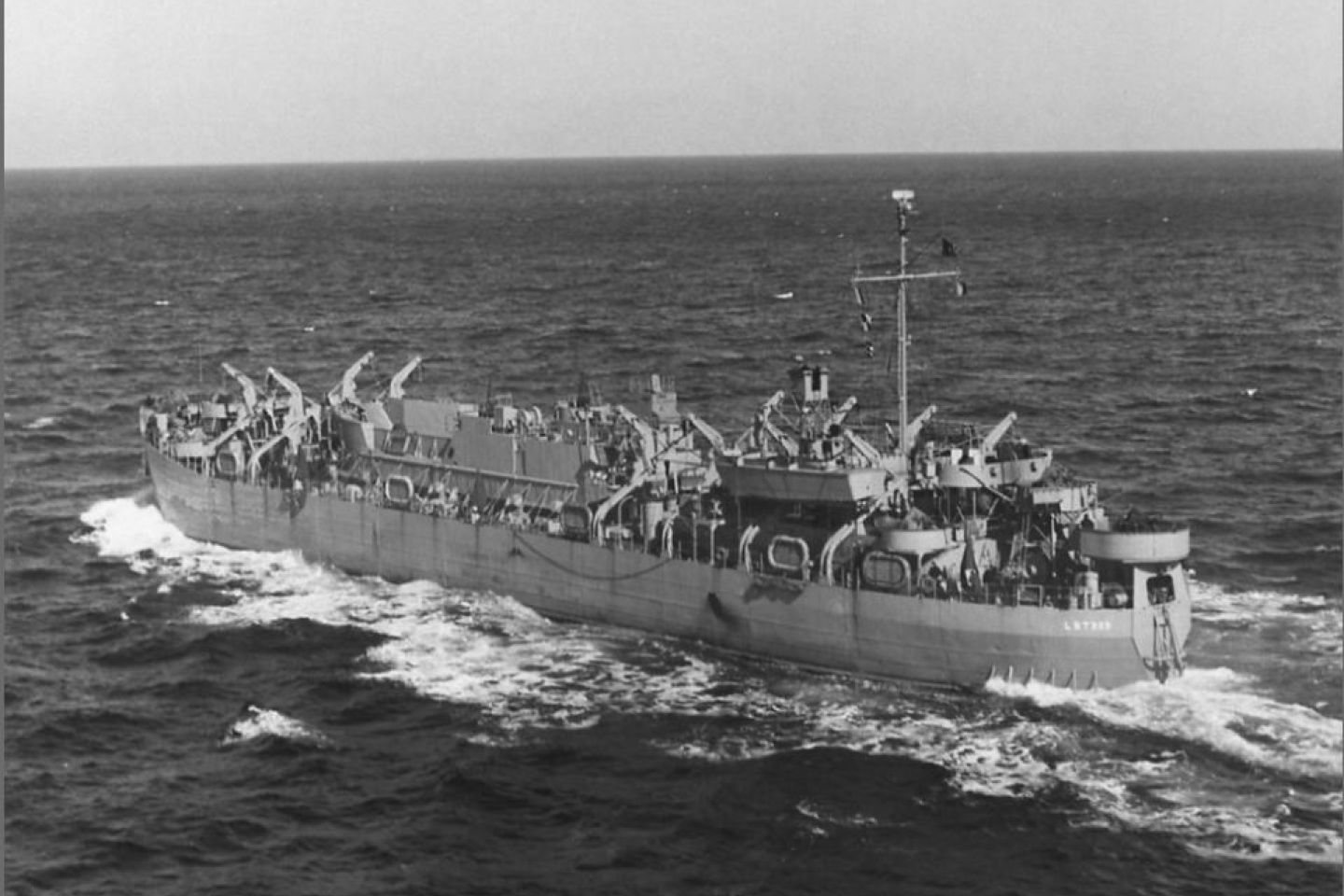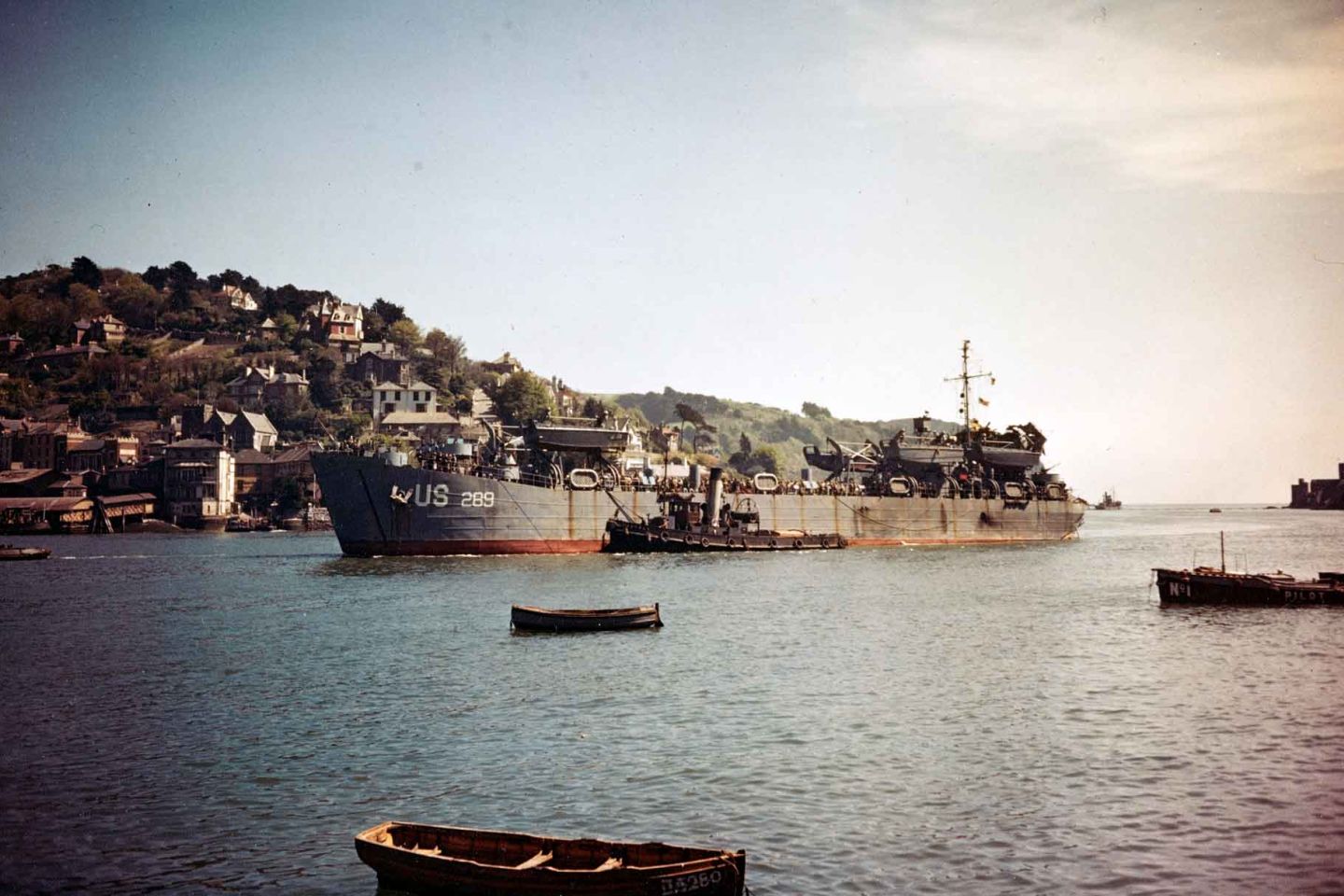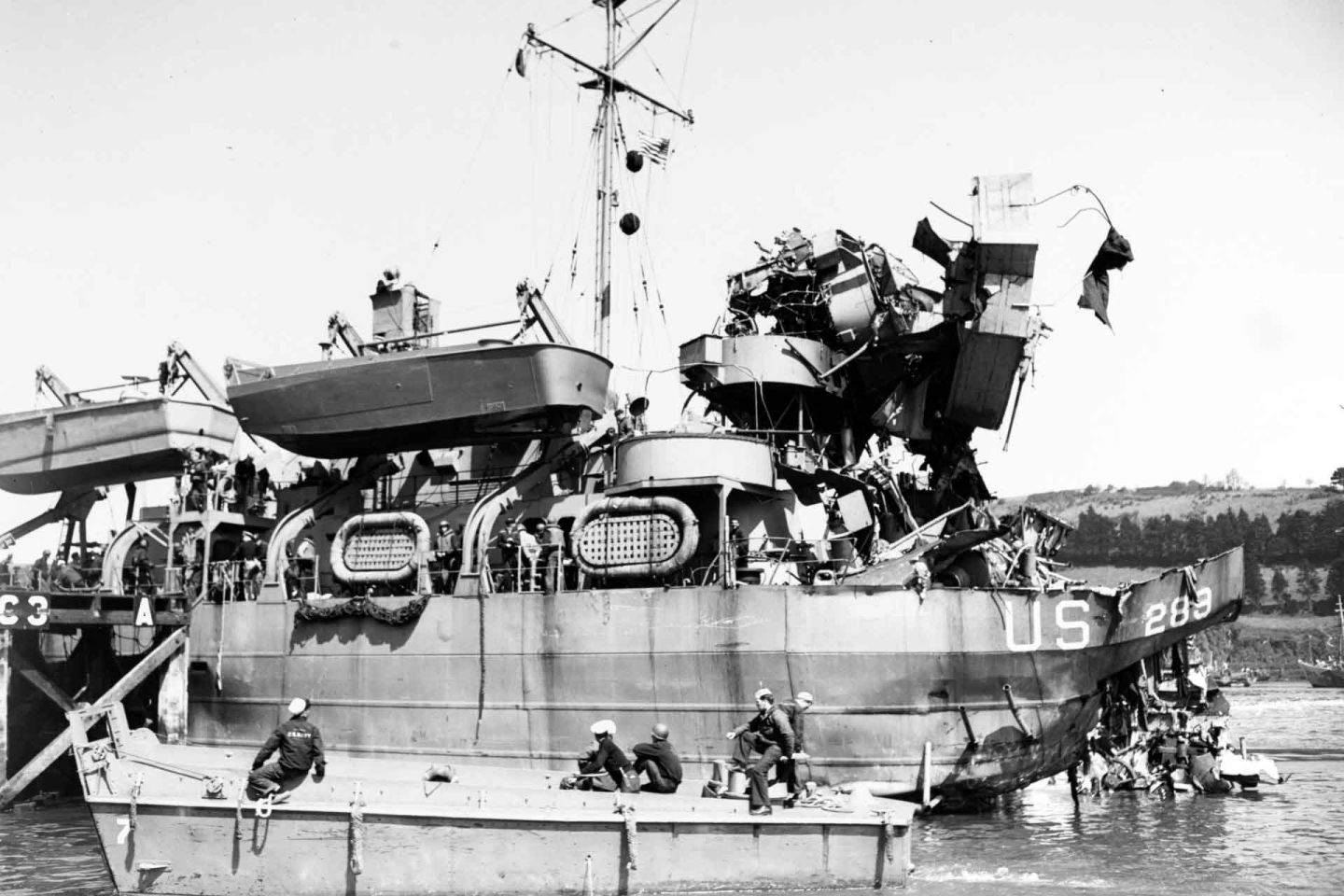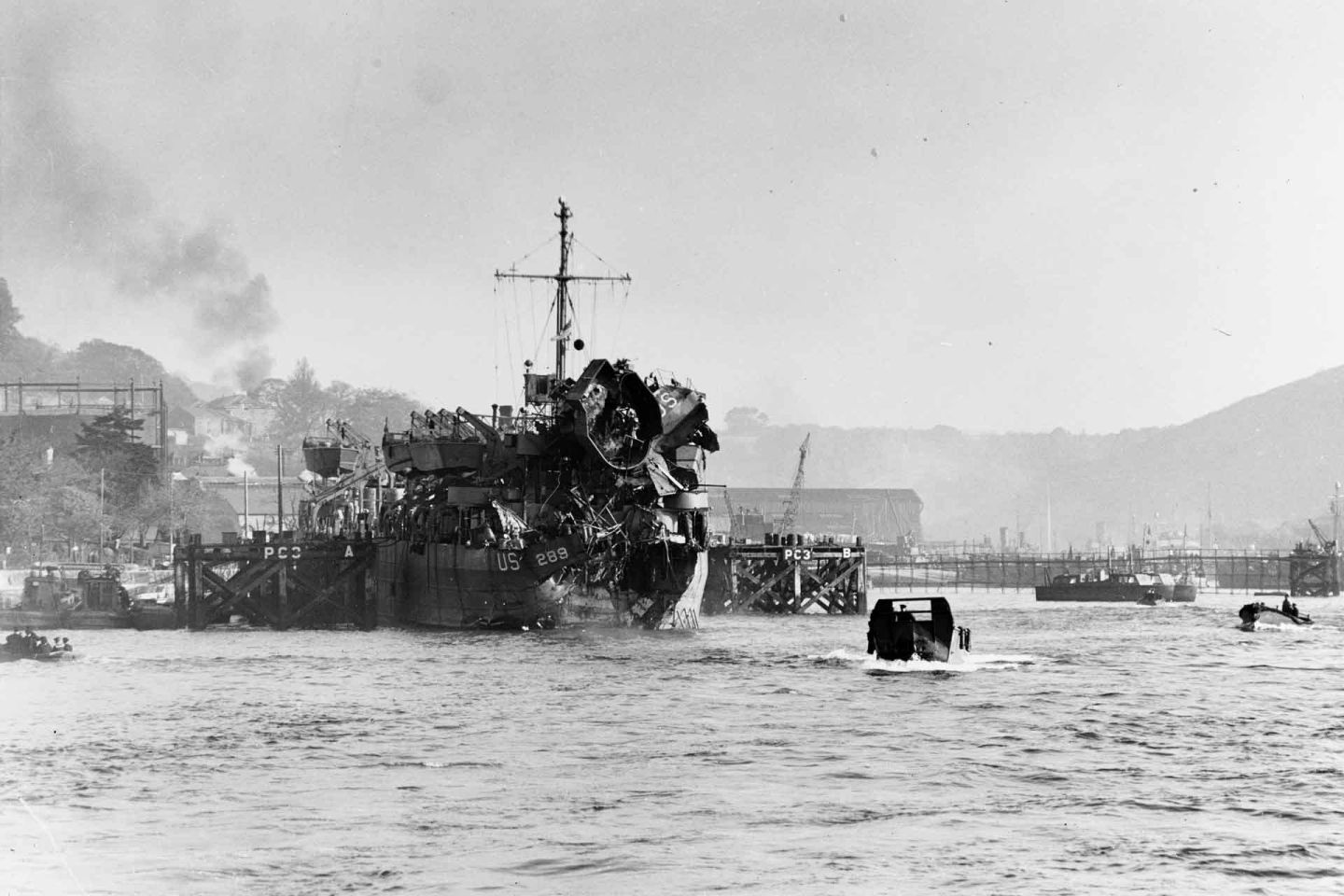USS
LST289
LST289 was constructed on 14th September 1943 at Ambridge, Pennsylvania, by the American Bridge Co. It was launched on 21st November and sponsored by Mrs. Raymond Clapper. The ship was commissioned on 31st December, with Lt. Harry A. Mettler, USNR, assuming command.
LST289 was transferred to the United Kingdom on December 9th, 1944, and then restored to the possession of the United States Navy on October 12th, 1946.
On 15th October 1946, she was removed from the Navy list and subsequently sold to the Netherlands under the name Fendracht on 30th January 1947.
In 1956, she underwent conversion to be used for commerce duty.
Specifications: |
| |
History | LST-1 Class Tank Landing Ship (Mk 1):
| |
Commanding Officers |
|
Images
Gallery
CREDIT(S): Data Source and images courtesy of NavSource Naval History (website: www.navsource.org)




